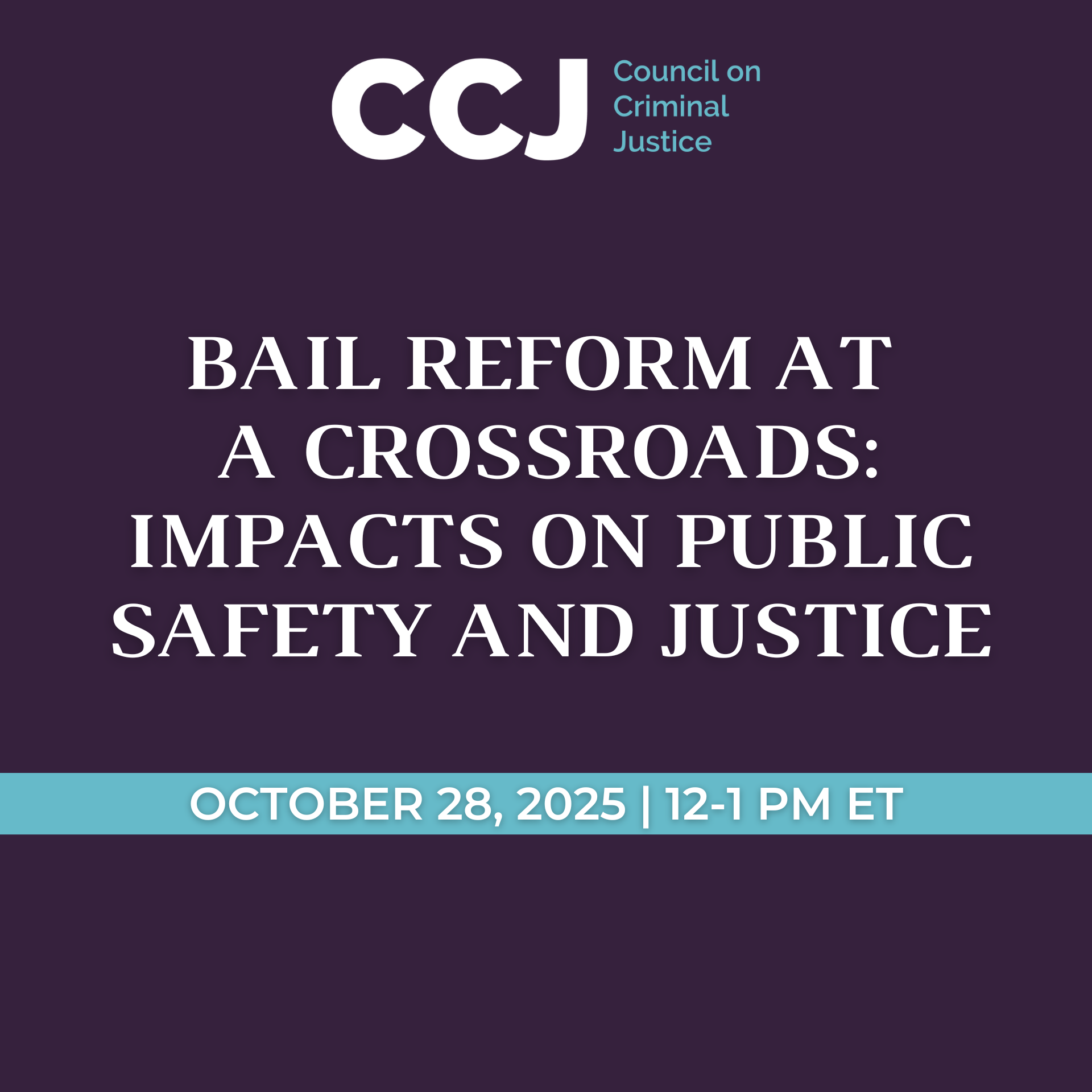CCJ task force report also finds increase in average time spent in prison by those receiving long sentences and a doubling of the population 55 and over serving such terms
FOR IMMEDIATE RELEASE
July 20, 2022
Contact: Tania Stewart
tstewart@mrss.com
864-356-1320
WASHINGTON, DC – A Council on Criminal Justice (CCJ) task force on Wednesday released a statistical portrait of the nation’s use of long prison sentences, showing that more than half of those incarcerated in state prison are serving a sentence of 10 years or more, that the time they spend behind bars has increased, and that the share of people 55 and over serving long sentences more than doubled from 2005 to 2019.
While representing a relatively small share (17%) of state prison admissions, people who receive long sentences stay in prison for long periods, causing their numbers to stack up over time. At the end of 2019, 57% of people in prison had been sentenced to 10 years or more, up from 46% in 2005, the analysis shows. The average length of time actually served by this group also increased during that period, from 9.7 years to 15.5 years.
The share of people convicted of a violent crime who received long sentences grew from 7% in 2005 to 10% in 2019. The percentage of people convicted of property and drug crimes who received long sentences remained stable, at 3% and 2%, respectively.
Examining racial trends, the analysis found that shares of Black and White people receiving long sentences have grown, and that the gap between those shares has widened, from 1 percentage point in 2005 to 4 percentage points in 2019. Black people were more likely to receive long sentences for violent crimes, while White people were for some property crimes.
The report, Long Sentences by the Numbers, is the first from CCJ’s Task Force on Long Sentences, which was launched in April to examine how long prison terms affect public safety, crime victims and survivors, incarcerated people and their families, communities, and corrections staff. Co-chaired by former U.S. Deputy Attorney General Sally Q. Yates and former U.S. Rep. Trey Gowdy (R-SC), the expert panel will use the analysis and other research to craft recommendations to strengthen public safety and advance justice. The recommendations are scheduled for release in December.
“For decades, long sentences have been a major part of our nation’s response to serious and violent crime, but the myriad impacts of those sentences are not well understood,” said Task Force Director John Maki. “This new and comprehensive collection of data advances our knowledge substantially and lays a strong foundation for our task force as it considers potential changes to enhance safety, promote restoration for victims, and improve post-release outcomes for those who serve prison time.”
The report analyzes prison admission, population, and release data submitted to the U.S. Department of Justice’s National Corrections Reporting Program from 2005 to 2019. CCJ used data from varying combinations of up to 29 states, which were chosen because they reported the most complete and consistent set of relevant numbers. The states selected accounted for 50% to 75% of the U.S. population in 2019.
Other findings in the analysis include:
- More than half of the people admitted to prison with a long sentence in 2019 were convicted of a violent offense, while 16% committed drug crimes, including possession, distribution, and trafficking. Another 13% were sentenced for public order offenses, a broad category that includes firearms violations, habitual driving under the influence, prostitution, and disorderly conduct.
- Compared to other age groups, people 55 and over are the fastest-growing population serving long sentences. Between 2005 and 2019, the share of people serving long sentences who were aged 55 and over rose from 8% to 19%.
- Men are about 72% more likely to receive a long sentence than women, mostly because men are convicted of more serious, violent crimes. Greater shares of women are admitted to prison on long sentences for drug offenses (16%) and property crimes (12%) than for violent offenses (6%).
- In 2019, roughly 7 of 10 people released from prison after serving long sentences were subject to a parole term or other form of mandatory post-release supervision. The share of people subject to no supervision after serving a long sentence decreased slightly over time, from 23% in 2005 to 19% in 2019. Most of these individuals served every day of their maximum sentence and are unlikely to receive reentry supervision or support.
In the coming months, the Task Force, which includes a broadly diverse range of perspectives and experience, will release additional publications, including analyses of the public safety impacts of long prison terms and how the U.S. differs from other countries in its use of such sentences. Task Force members are:
- Trey Gowdy, former U.S. Representative, South Carolina, 4th District (co-chair)
- Sally Yates, former U.S. Deputy Attorney General; Partner, King & Spalding (co-chair)
- Kathryn Bocanegra, Assistant Professor, University of Illinois, Chicago, School of Social Work; Senior Advisor, Attorney General of Illinois
- Lisa Daniels, founder, Darren B. Easterling Center for Restorative Practices; member, Illinois Prisoner Review Board
- Angela J. Davis, Distinguished Professor of Law, Washington College of Law, American University; former Director, D.C. Public Defender Service
- Amy Fettig, Executive Director, The Sentencing Project
- April Grayson, Statewide Coordinator, Young Women’s Freedom Center
- Tim Head, Executive Director, Faith and Freedom Coalition
- Bernette Joshua Johnson, former Chief Justice, Louisiana Supreme Court
- Paul Larkin Jr., Senior Legal Research Fellow, Meese Center for Legal and Judicial Studies, Institute for Constitutional Government, Heritage Foundation
- Sam Lewis, Executive Director, Anti-Recidivism Coalition
- Chiquisha “Keisha” Robinson, Deputy Chief, Prisoner & Reentry Legal Services, D.C. Public Defender Service
- Anne Seymour, National Victims Advocate; co-founder, Justice Solutions
- Tarra Simmons, Representative, Washington State, 23rd District; Director, Civil Survival Project
- Bryan Stirling, Director, South Carolina Department of Corrections
- Benjamin Tucker, Former Deputy Commissioner, New York Police Department
Support for the Task Force comes from Arnold Ventures, the Ford Foundation, Southern Company Foundation, and Stand Together Trust, as well as #StartSmall, the John D. and Catherine T. MacArthur Foundation, and other CCJ general operating contributors.
About the Council on Criminal Justice
The Council on Criminal Justice (CCJ) is a nonpartisan think tank and invitational membership organization that advances understanding of the criminal justice policy challenges facing the nation and builds consensus for solutions based on facts, evidence, and fundamental principles of justice.
To learn more, visit counciloncj.org.




